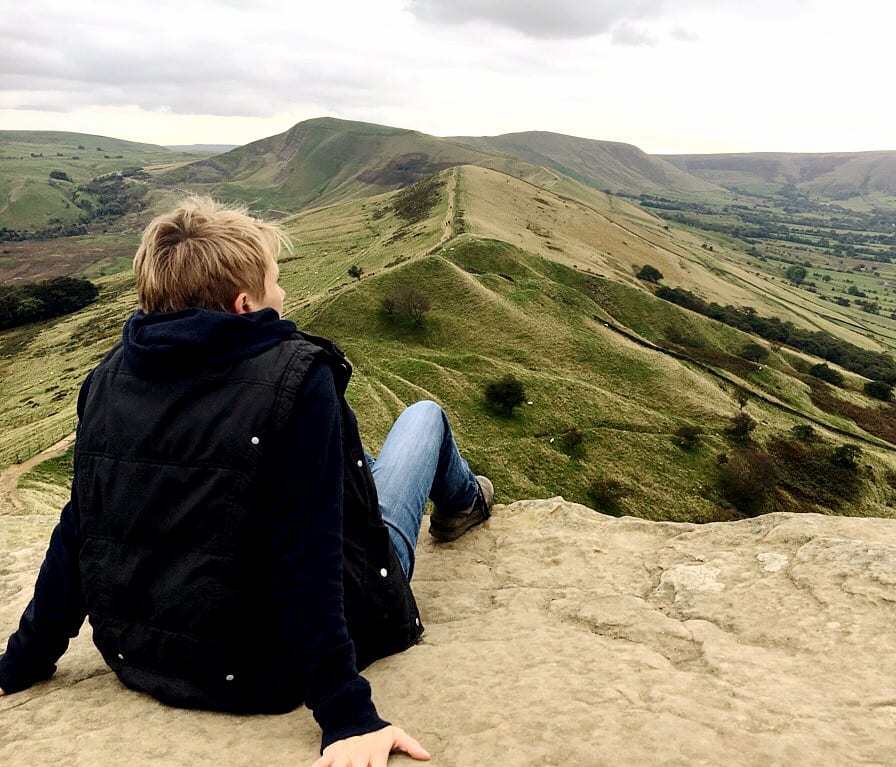The Peak District is full of the most wonderful dales, but Coombs Dale is a particularly special hidden gem. It is unknown to most visitors and even to many residents of the neighbouring villages, and you’re almost guaranteed to find peace and quiet here.
Coombs Dale is a steep-sided dry limestone valley, covering an area of more than 230 acres. It is a designated Site of Special Scientific Interest (SSSI), in recognition of its nationally important wildlife habitats.
Today Coombs Dale is a tranquil, beautiful place, but hundreds of years ago it was the hunting ground of a feared highwayman, Black Harry, whose ghost is said to still haunt the quiet valley on the darkest nights.

Geology
Coombs Dale and the surrounding hills is an area of limestone created around 330 million years ago, when Britain lay under a shallow, tropical sea close to the equator. The fossilised skeletons of the tiny sea creatures and plants which formed the limestone can still be seen in many of the rocks today.

Flora and Fauna
This beautiful dale has largely managed to escape the hand of modern agriculture, other than for grazing, and as such it has become home to many threatened species.

Coombs Dale is perhaps best accessed by a bridleway leading from the village of Stoney Middleton. It is approached through arches of towering ancient ash trees, and the path is thick with hazel, willow and blackthorn.


Once in the dale, look out for rare plants, including limestone fern, rock rose, dark red helleborine, fingered sedge, lily of the valley and numerous types of endangered orchids, including bee orchids and lizard orchids. The southern slopes of the dale are covered in cowslips, and woolly-headed thistles grow along the pathways.
A number of species of insects also love Coombs Dale. It is renowned for being one of the best sites in the UK for its varieties of butterflies, home to the dark green fritillary, ginger skipper and brown argus.
Black Harry the Highwayman
Travellers making their way across the Peak District hundreds of years ago were frequently at the mercy of highwaymen. Maps weren’t readily available until 1760 and signposts rarely existed or couldn’t be read. As such, the chances of becoming lost on the moors, particularly after dark, were high – and masked robbers ruled the roads.
Historian Howard Smith has described that the Derbyshire of 250 years ago was ‘…like the Wild West … travellers feared moving around this county like no other.’
A number of ancient packhorse routes ran through Coombs Dale, trails used from the early Middle Ages until the mid 19th Century to transport goods on horseback across the region. In the early 18th Century the area around Coombs Dale was notorious as being the hunting ground of a highwayman known as Black Harry, who would prey on travellers crossing the moors between Tideswell and Bakewell.
After a busy career Black Harry was eventually caught and arrested at Wardlow Cop by local law enforcement officials. He was hung and gibbeted on the Gallows Tree at nearby Wardlow Mires.
Black Harry Gate still stands in Coombs Dale, at the end of Black Harry Lane. The old farmhouse of the same name stood until the 1970s, when it was demolished to make way for local mining activities. It is said that on dark nights the ghostly sounds of galloping hooves can still be heard approaching across the moors. Maybe this is part of the reason why Coombs Dale has remained so undisturbed for centuries.




